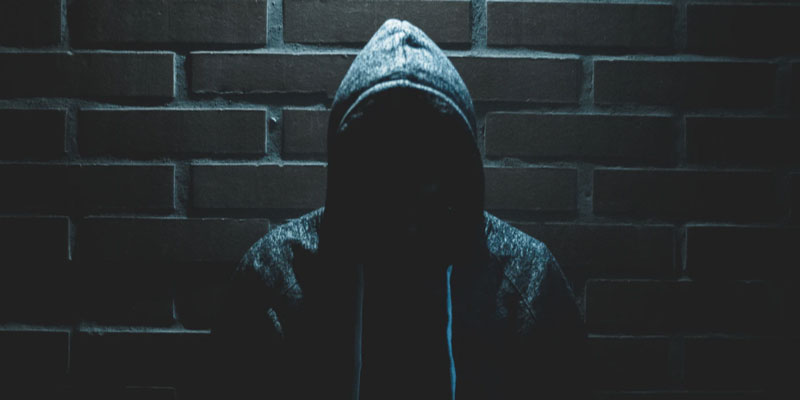
Hate Crime Statistics and Dysfunction on the Campus
Given public statements by the University of Rhode Island’s new Australian president, Marc Parlange, I asked the university for documentation substantiating his assertion that URI is committed to “anti-racism.” In response, I received a document titled, “Anti-Black Racism: An Academic Affairs Action Agenda for Change.”
All in all, it’s about what one would expect. Calls for spending to pay people to spend time thinking about and advancing progressive identity politics, ensuring that it infiltrates every part of life on campus. Demands that every activity and lesson must spread the dogma. And so on.
In the very first paragraph, however, the document might raise eyebrows among those who’ve followed news about hate-crimes around the country: “Alarmingly violent acts against Asian and Asian Americans are also occurring with increasing frequency and there is a long history of oppression of Black, Latinx, and Indigenous communities.” The emphasis on anti-Asian crimes at the very start of a document on anti-Black racism is notable because of the common observation that many of the perpetrators of anti-Asian attacks have been Black. If true, that would suggest that all of this effort, expense, and public ire over “isms” is being spent in a misdirected way.
Keep in mind the current population make-up of the United States. People identified as “White alone” account for 76% of the population, while “Black or African American alone” account for 13% and “Asian alone” account for 6%. Complicating matters is the continued practice of treating ethnicity as distinct from race, even though the anti-racism industry lumps them together. For our purposes, note that 60% of the population is non-Hispanic White, while 19% are Hispanic of any race.
Now look at FBI hate crime data for 2020. Notably, White offenders committed anti-Asian hate crimes at less than their percentage of the population (52%), while Black offenders exceeded their per capita rate (22%). Looking only in California, where such attacks have been particularly noteworthy, the White percentage drops to 48% and Hispanic offenders account for almost as many attacks as non-Hispanic offenders (26% versus 27%). This is a much more complicated picture than the anti-racists acknowledge.
Naturally, this is the subject of heated debate and narrative-building. A report by the Virulent Hate Project at the University of Michigan sought to counteract the complicated picture by going through 4,337 news stories about hate crimes. The researchers found that 89% of anti-Asian offenders were, in fact, White, but the major caveat is that 82% of the stories they reviewed did not identify the race of the suspect. This is another area of distrust (and a frequent punchline) among non-progressives: If the story doesn’t identify the race of a person, then it probably didn’t fit the identity-politics narrative, which means (to put it mildly) we can assume a disproportionate number of the non-identified offenders were not White.
Along these lines, an Axios article on religion-based trends in the newly released FBI data also refers to more-recent news stories. In May of this year, for instance, the article notes that “New York City experienced almost as many anti-Semitic hate crimes during a three-week period in May than in the whole first quarter of the year.” Anybody who was paying attention knows that the offenders tended to be Middle Eastern (that is, Muslims). In that context, consider the FBI’s glossary definition of “White”:
A person having origins in any of the original peoples of Europe, the Middle East, or North Africa.
Oddly, in 2020, fully 77% of New York anti-Jewish hate crimes are marked with “Unknown” offenders, but we also have no way of knowing how many of the 11% who were White were Middle Eastern. Making matters worse, it’s not as if the FBI can’t or doesn’t distinguish along these lines when it wants to. One type of “bias” the agency tracks in its Race Ethnicity Ancestry category is “anti-Arab”; it also tracks “anti-Islamic” in the Religion category; yet offenders can only be “White.” Oddly, considering how closely their religion tracks with their ethnicity, Jews are only counted as a religion.
If you’re of a mind to really understand what’s going on with race in our country, the complications accumulate. One-fifth (21%) of anti-White hate crimes are perpetrated by White people, which is multiples higher than own-race attacks found for other groups, although still much lower than the 57% of anti-White crimes by Black offenders.
The nature of the crime matters, too. The top offense type against Blacks, Arabs, and Asians is “intimidation.” Against Whites, it’s “simple assault.” To be clear, the numbers are lower, especially when considered as a percentage of the population, but the nature of crimes is important. Something like “intimidation” is on its face more subjective than “assault,” raising the question of whether different races report “hate crimes” more readily (and whether authorities are willing the report them as such at different rates).
How much attention our mixing-pot society should devote to tracking “bias incidents” may be up for debate, but institutions of higher learning, which we used to expect to cultivate subtlety of thought, have left all doubts aside and are pushing divisive, harmful, and simplistic narratives from top to bottom. Founding broad, university-wide policies in ideological imperatives that make little pretense to a factual basis, they are convincing young Americans that they live in a society that does not actually exist.
Featured image by Luis Villasmil on Unsplash.
